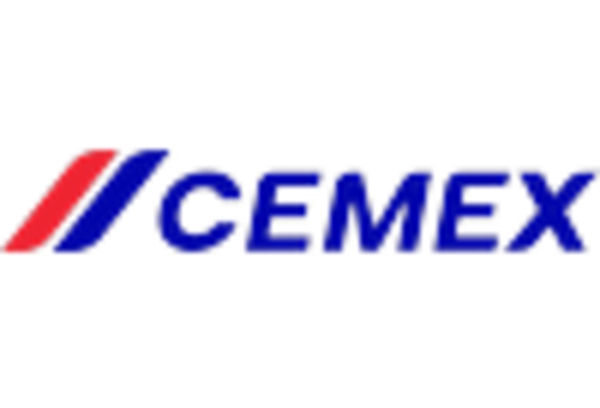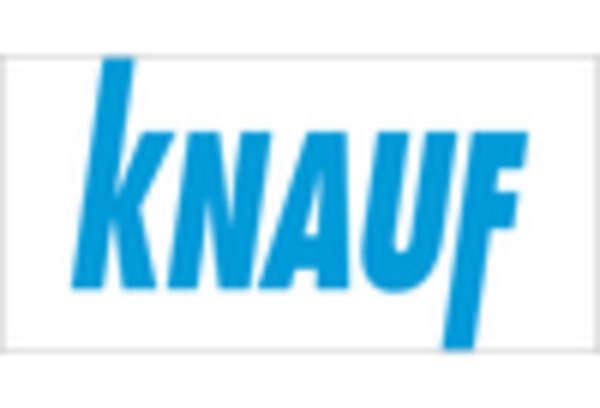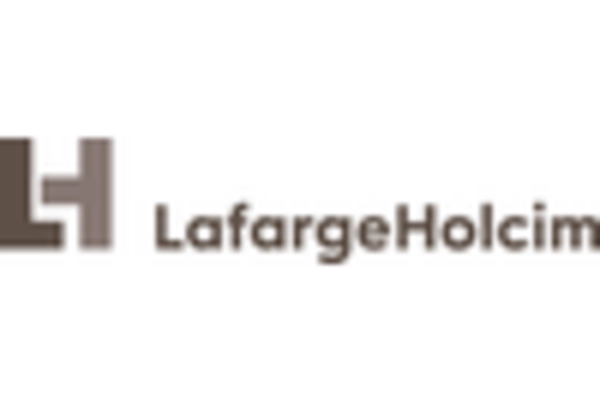Growth in the Construction Sector
The Foam Concrete Market is poised for growth, largely due to the expansion of the construction sector. As urbanization accelerates, there is a heightened demand for residential and commercial buildings, which in turn drives the need for innovative construction materials. Foam concrete, with its unique properties, offers solutions for various applications, including foundations, walls, and roofs. Recent statistics indicate that the construction industry is expected to grow by approximately 5% annually, creating a favorable environment for foam concrete adoption. This growth trajectory suggests that the Foam Concrete Market will likely benefit from increased project volumes and a shift towards modern construction techniques.
Government Initiatives and Regulations
Government initiatives aimed at promoting sustainable construction practices significantly influence the Foam Concrete Market. Various countries have implemented regulations that encourage the use of eco-friendly materials, including foam concrete, in building projects. These regulations often include incentives for using materials that reduce carbon footprints and enhance energy efficiency. For instance, some regions have established building codes that mandate the use of lightweight and insulating materials, which foam concrete readily provides. This regulatory environment not only fosters innovation within the Foam Concrete Market but also encourages manufacturers to develop products that meet these evolving standards, potentially leading to increased market penetration.
Increased Awareness of Energy Efficiency
The growing awareness of energy efficiency among consumers and builders significantly impacts the Foam Concrete Market. As energy costs rise and environmental concerns become more pressing, there is a shift towards materials that enhance energy performance in buildings. Foam concrete, with its excellent insulation properties, contributes to reduced energy consumption in heating and cooling, making it an attractive option for energy-conscious projects. Market analysis suggests that the demand for energy-efficient building materials is likely to increase, with foam concrete positioned as a key player. This trend indicates a promising future for the Foam Concrete Market as it aligns with broader sustainability goals.
Rising Demand for Lightweight Construction Materials
The Foam Concrete Market experiences a notable increase in demand for lightweight construction materials. This trend is driven by the need for energy-efficient building solutions that reduce overall structural weight while maintaining strength. Foam concrete, known for its low density and excellent thermal insulation properties, aligns well with these requirements. As construction projects increasingly prioritize sustainability, the adoption of foam concrete is likely to rise. According to recent data, the market for lightweight materials is projected to grow at a compound annual growth rate of approximately 7% over the next five years. This growth indicates a robust opportunity for the Foam Concrete Market to expand its footprint in various construction applications.
Technological Innovations in Foam Concrete Production
Technological advancements in the production of foam concrete are reshaping the Foam Concrete Market. Innovations such as improved mixing techniques and the development of new additives enhance the performance characteristics of foam concrete, making it more appealing to builders and architects. These advancements not only improve the material's strength and durability but also streamline the production process, reducing costs. As manufacturers continue to invest in research and development, the Foam Concrete Market is expected to witness a surge in product offerings that cater to diverse construction needs. This focus on innovation may lead to increased market share and competitiveness within the industry.

















Leave a Comment